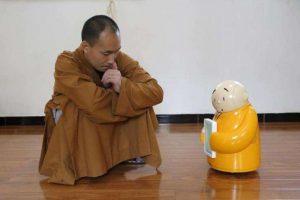
As city after city fell under Taliban control in the wake of the unconditional withdrawal of occupying US and NATO forces from Afghanistan, museums and archaeologists across the country, who document and safeguard the nation’s cultural heritage, were caught off-guard. Many raced to secure artifacts and ancient sites as well as they could as Taliban forces advanced into Kabul—not least among them, the 80,000 items collected at the National Museum of Afghanistan and deemed to be particularly vulnerable.
“We didn’t expect this to happen so quickly,” said Noor Agha Noori, who heads Afghanistan’s Institute of Archaeology in Kabul, adding that officials had planned to move artifacts from cities such as Herat and Kandahar for safekeeping, but the rapid sweep of Taliban troops amid evaporating government resistance had prevented them taking action. (National Geographic)
Afghanistan served as a major crossroads for the trade routes of the Silk Road for centuries, nurturing a rich heritage of influences that included Buddhism, Christianity, Hinduism, Judaism, and Zoroastrianism, prior to the ingress of Islam in the seventh century. In 2001, the Taliban famously destroyed two sixth-century Buddha statues at Bamiyan, as well as numerous other statues and artifacts at the National Museum in Kabul. Over the course of the last 20 years of war and turmoil, countless cultural properties have been destroyed or removed from the country, and many cultural leaders fear that even more irreplaceable monuments to the region’s distant past could be lost.
“We need to safeguard the artifacts, but the question is how to find a safe location,” a government source told National Geographic. “There is no way for them, or the staff, to leave the country.” (National Geographic)
Mohammad Fahim Rahimi, director of the National Museum of Afghanistan expressed fear over the fate of its collection of 80,000 artifacts from the regions’s pre-Islamic history. Other notable sites also deemed vulnerable include museums in Balkh, Ghazni, Herat, and Kandahar, as well as, close to Kabul, the ancient Buddhist monastic complex of Mes Aynak, which is home to numerous stupas and statues, and countless other cultural relics, all of which are now under Taliban control.
“Unfortunately, today Kabul city had witnessed an unprecedented chaos; using the opportunity looters and smugglers in different part of the city have looted private and public properties,” the National Museum of Afghanistan shared in a Facebook post dated 15 August. “However, the museum staff, artifacts, and goods are safe yet, but continuation of this chaotic situation causes a huge concern about safety of [the] museum’s artifacts and goods for museum employees. Therefore, the National Museum of Afghanistan urges from security forces, [the] international community, Taliban, and other influential parties to pay attention to the safety and security of objects and do not let the opportunists to use this situation and cause for deterioration and smuggling the objects and goods of this institution.” (Facebook)
Established in 1992, the National Museum houses a vast collection of artifacts from Buddhist, Persian, and Islamic cultures, despite enduring looting and bombings over the years that have irreversibly damaged its collection.
Despite the turbulence of the Taliban’s sweeping advance across the country, there have so far been no reports of cultural desecration. In statement issued to its followers in February, Taliban leaders ordered:
– As Afghanistan is a country replete with ancient artifacts and antiquity, and that such relics form a part of our country’s history, identity and rich culture, therefore all have an obligation to robustly protect, monitor and preserve these artifacts.
– No one is allowed to excavate, transport and sell historic artifacts anywhere, nor to move it outside the country under some other name. (Islamic Emirate of Afghanistan)
On Monday, Taliban spokesman and international negotiator Suhail Shaheen offered assurances to Sri Lanka’s Daily Mirror newspaper that ancient Buddhist sites were not in any danger from Taliban forces. “Buddhist sites in Afghanistan are not at risk, I refute any claim in this regard,” he said from Doha. (Colombo Gazette)
However, the Taliban’s history of intolerance and cultural destruction has done little to instill confidence. From 1996–2001, Taliban forces attacked and looted museums and libraries, while banning almost all forms of artistic and cultural expression.

“They have whitewashed their image, but they are still a very ideological and radical group,” said Omar Sharifi, a social science professor at the American University of Afghanistan, who has since fled Kabul for New Delhi. (National Geographic)
In Japan, a group of researchers issued a statement on Monday, urging the international community to protect Afghanistan’s cultural wealth. The researchers called on people across the world to raise their voices to avert further bloodshed at all costs and to protect Afghanistan’s unparalleled cultural heritage.
Maeda Kosaku, a visiting professor at Tokyo University of the Arts, and other researchers have been working to preserve the ruins at Bamiyan and other cultural properties—restoring ancient murals and returning Afghan relics that had found their way to Japan. Maeda said that his team hoped that their activities would help with reconstruction and contribute to peace.

Buddhism has played a significant role in shaping the history and culture of what is now Afghanistan, flourishing in the kingdoms that lay on the Silk Road trade routes with Central Asia. The conquests of the Mauryan emperor Ashoka (r. c. 268–c. 232 BCE) and the subsequent Greco-Buddhist culture that blossomed under the Greco-Bactrian Kingdom (256 BCE–100 BCE) and the later Indo-Greek Kingdom (c. 180 BCE–c. 10 CE) saw Buddhism establish deep roots that lasted for more than 12 centuries until the religion began to dissipate following the Muslim conquests in the seventh century, disappearing during the Persianate Ghaznavid dynasty (977–1186).*
A wealth of ancient Buddhist stupas, monasteries, caves, images of the Buddha, and other artifacts attest to this ancient and deeply rooted heritage. Ashoka’s territorial expansions, coupled with Greek influences in the mid-to-late fourth century BCE led to a unique cultural melting pot that saw the first known Buddhist statuary emerge in Gandhara—considered by many to represent the pinnacle of Buddhist art.
* Buddhist Traces in Afghanistan: Reminiscences of Peace and War (Buddhistdoor Global)
See more
The Taliban destroyed Afghanistan’s ancient treasures. Will history repeat itself? (National Geographic)
National Museum of Afghanistan موزیم ملی افغانستان (Facebook)
Statement of Islamic Emirate regarding protection and preservation of ancient artifacts (Islamic Emirate of Afghanistan)
National Museum of Afghanistan expresses concern for safety of its artefacts (The National)
Afghanistan’s National Museum Once Again Fears Looting (NPR)
Researchers: Protect Afghan cultural properties (NHK World)
Taliban assures Sri Lanka on security of Buddhist sites (Colombo Gazette)
Related news reports from Buddhistdoor Global
Buddhist History Brought Back to Life in Afghan Museum
British Museum to Return “Stunning” Gandharan Buddhist Artifacts to Afghanistan
Archaeologist Killed Near Buddhist Archaeological Site of Mes Aynak in Afghanistan
Ancient Buddhist Artifacts from Afghanistan Restored in Japan
Exquisite Ancient Buddha Image from Mes Aynak to be Exhibited at National Museum of Afghanistan
Is Time Running Out for the 5,000-year-old Mes Aynak Archeological Site in Afghanistan?
Related features from Buddhistdoor Global
Buddhist Traces in Afghanistan: Reminiscences of Peace and War
Buddhistdoor View: The Case for Rebuilding the Bamiyan Buddhas to Their Original Glory
The Nostalgia of 2,500 Years: Celebrating South Asia’s Buddhist Heritage












